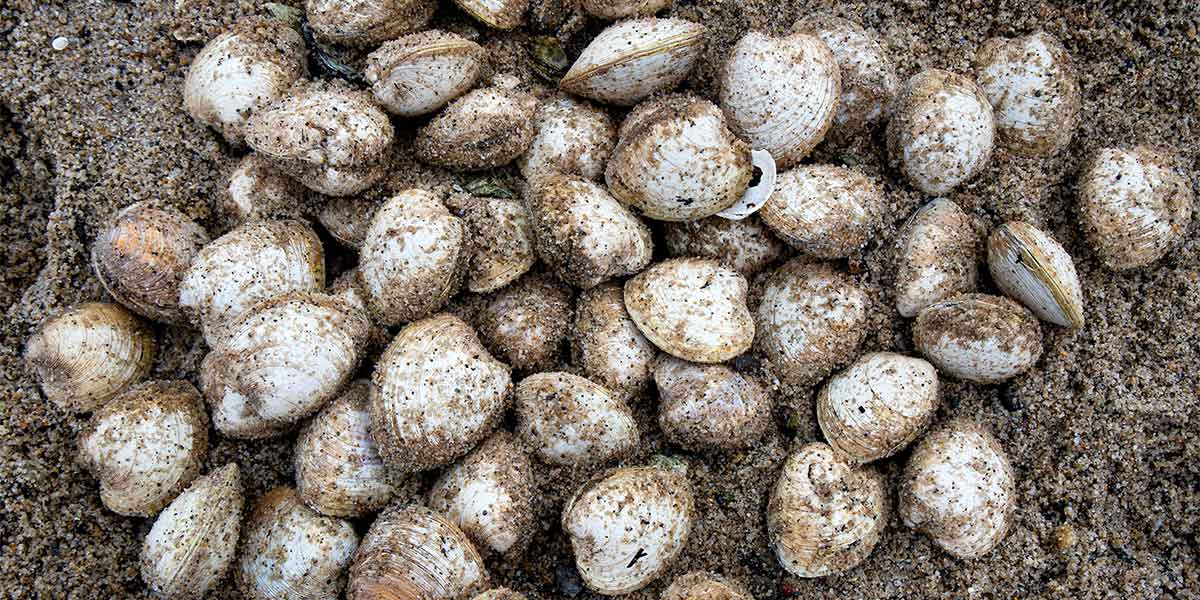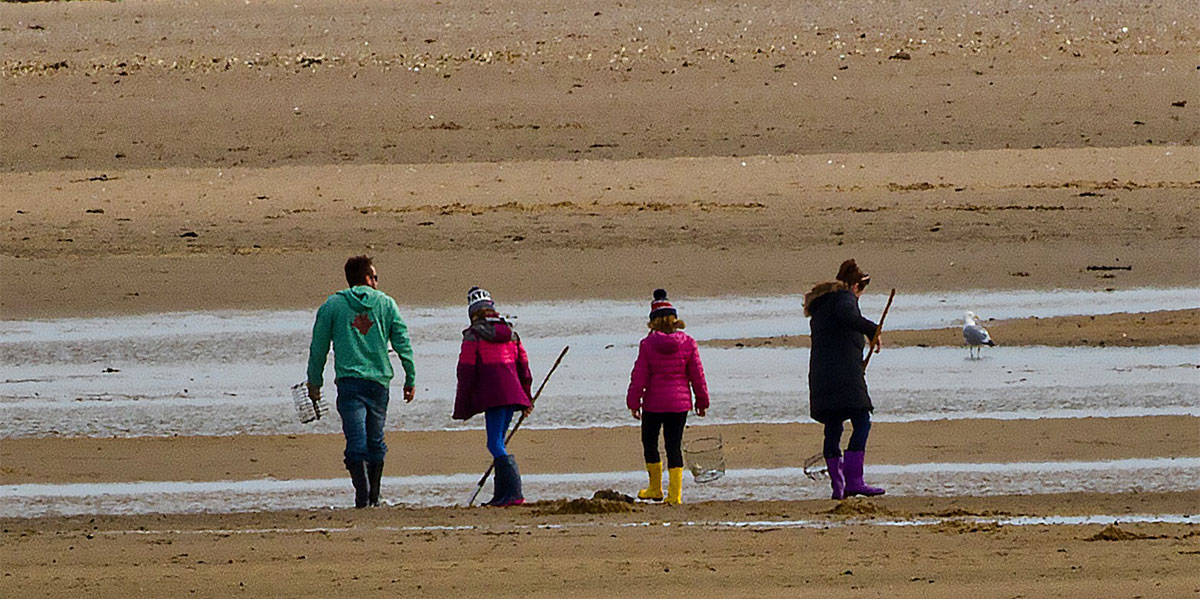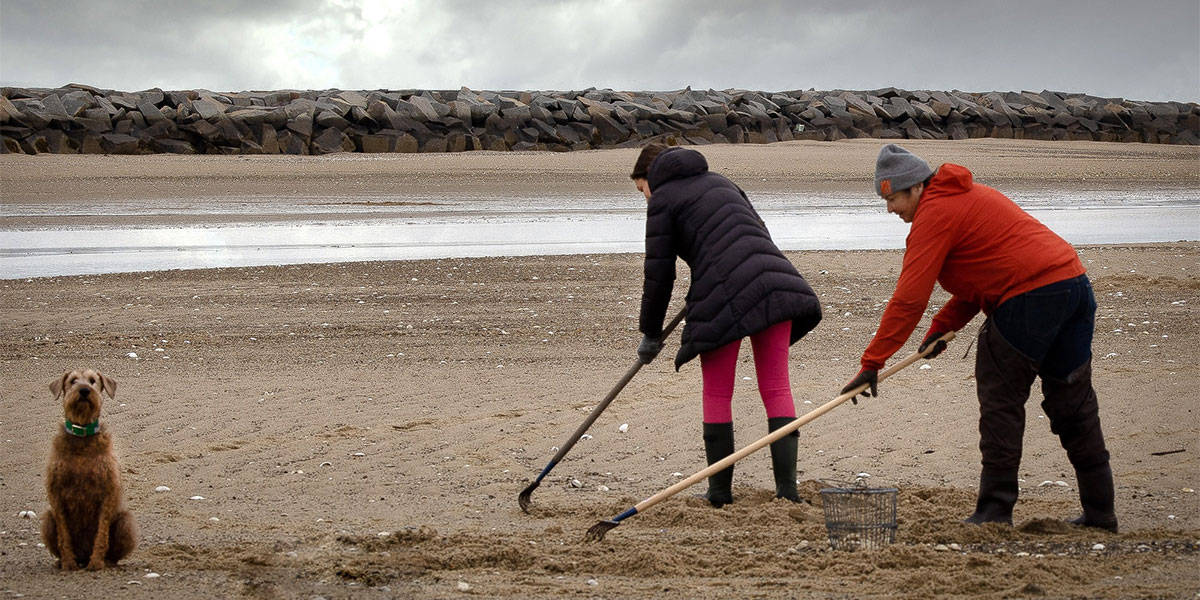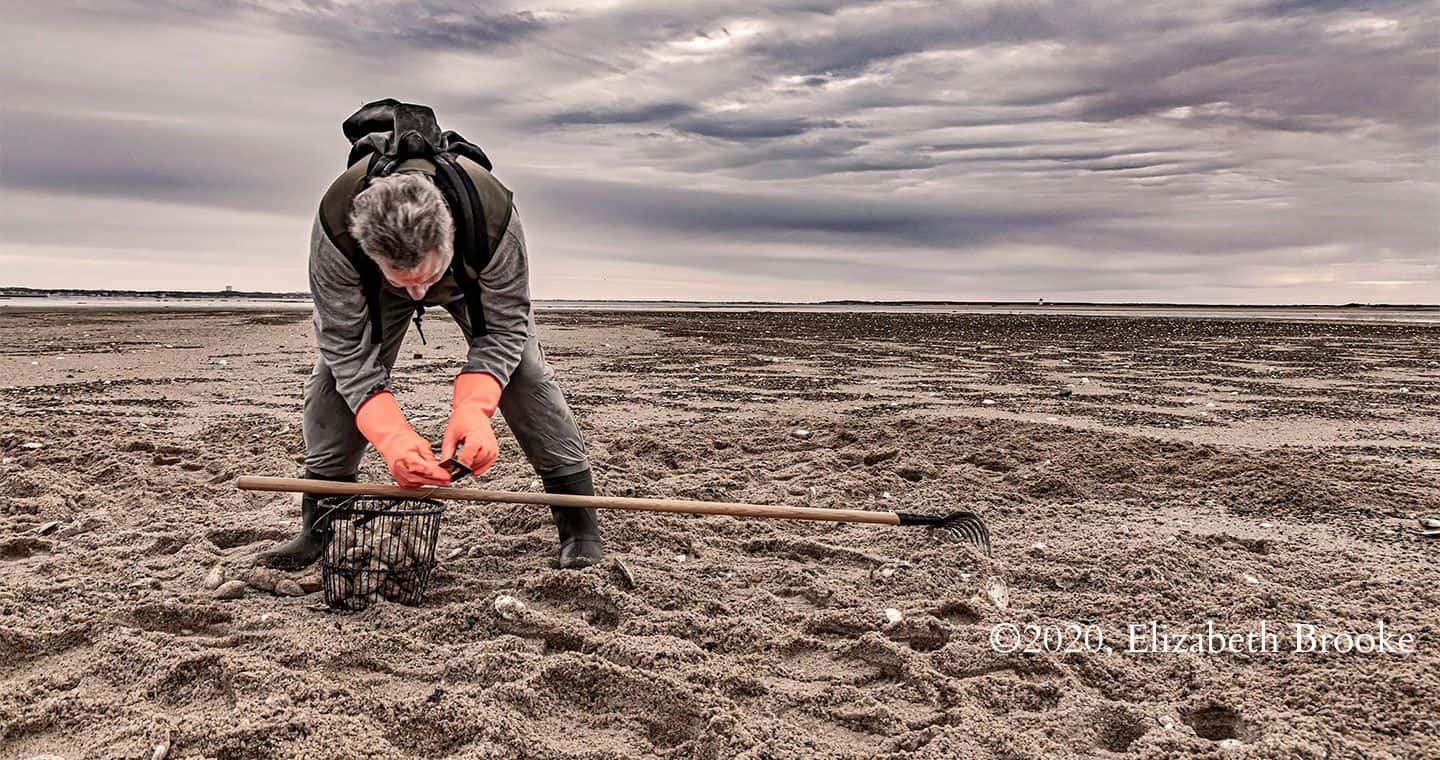Clam Digging in Provincetown – A Rich History and Delectable Pastime
One of the many perks of visiting Provincetown during the wintertime – in addition to fee-free visits to the Cape Cod National Seashore, beaches empty of tourists, and special rates at our Provincetown lodging – is the local shellfishing season, which runs from November through the end of March on Fridays and Sundays. It’s a tradition that dates back centuries, providing sustenance for the Wampanoag and Narragansett tribes (the name of the most-prized clam, “quahog,” has Native American roots, and its shell was once a form of currency). Early settlers on Cape Cod relied on shellfish during times of low-yield crops through shellfish and clam digging, and generations of locals and tourists up until the present day have joined in the pastime.
Meet new friends and add some adventure to your winter stay at the friendliest year-round hotel in Provincetown by getting out for a day of clam digging – your reward will be the freshest and most delicious shellfish you’ve ever tasted, harvested with your two hands.

©2020, Elizabeth Brooke
Your Clam Digging Guide – Clams, Oysters, and Everything In Between
The tidal flat zone surrounding the Provincetown marina and causeway is an ideal breeding ground for several types of shellfish, each unique in their shape, flavor, and size limit for harvesting. Here’s a rundown of what you’ll find in our waters:
The most well-known is the quahog clam, which has a classic round hard clamshell and lives just below the mud. They must be larger than 1 inch to harvest, and quahogs larger than 3 inches are prized and known as “chowder” clams, as they’re perfect for your favorite clam chowder recipe.
Softshell clams, also very common in the flats, make their home a bit deeper below the surface (4-12 inches in depth). Be careful when digging for them, as their shell is tender and easily damaged, and they must be over 2 inches to harvest. They’re one of the most versatile in how you can prepare them and are equally delightful steamed, fried, or in a winter stew.
You’ll find razor clams in a similar place as softshell clams, their straight “razor” bodies a bit below the sandy surface, with a minimum of three inches required to harvest.
Oysters, prized for their delicacy and easy, quick preparation on the half shell, are found on hard sand surfaces and rocks along the breakwater. They must be over 3 inches to harvest.
Mussels are unique because the town sets no weekly limit, and no permit is required to gather them, so round up however many your heart and taste buds desire.
Lastly, scallops are available to harvest only when their numbers allow for it – their short lifespan makes population control important.

©2020, Elizabeth Brooke
Plan Your Day Clamming at the Bay
Clam digging is best around low tide, so start your day by checking the local tide chart. Then drop by the Town Clerk’s office, just around the block from us, where you can purchase a shellfish permit – annual permits are $15 for residents, free for locals age 65+, and a weekly permit available for non-locals, with a weekly license available for $25. You can also pick up a gauge, which is required gear and allows you to measure each shellfish to ensure it meets minimum harvest size.

©2020, Elizabeth Brooke
Next, swing by a local store like Marine Specialties, where you can buy knee-high waders (rain boots are great, too, if you already have those), a rake for digging below the sand, and a pail for your bounty. The town’s shellfish constable maintains the weekly harvest limit (available online) and is an excellent resource for questions about where and how to successfully fill your shellfish pail to the brim.
With your gear in hand, head a mile down Commercial St to the causeway, pick whatever side looks best, and start digging away!
Stay with us this winter, get out for some clamming, and an unforgettable meal of raw oysters, steamed mussels, or clam linguini is yours to discover!


